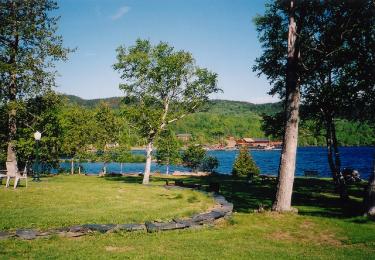How to Care for Lakes
Lakes and reservoirs cover nearly 40 million acres in the Uunited States. Lakes generally have a surface area greater than 10 acres. Unlike ponds, which tend to be man-made, lakes are usually natural. They tend to be deeper than ponds, and therefore have a bigger temperature gradient from top to bottom. Some lakes are large enough to impact local climate conditions.
Lakes suffer many of the same problems as ponds—pollution, sedimentation, invasive species—but these tend to be magnified by surrounding agricultural, residential and recreational land use. For example, motorboats can disturb wildlife and boat wakes can cause serious erosion in popular recreational areas. Lakeside living—and the homes, resorts, marinas, roads, and docks that come with it—puts pressure on the ecosystem: Runoff from yards and driveways and wastewater pollution are common problems.
Caring for a lake
There are many ways to limit your impact on a lake. Here are a few.
- Avoid making changes to your waterfront that could harm fragile wildlife habitats. These include building a beach or installing a permanent dock.
- View your yard as an extension of the lake: limit the amount of turf, and the use of pesticides, herbicides and fertilizers.
- Maintain your septic tank and avoid putting harmful chemicals down the drain to minimize groundwater pollution.
- Reduce runoff from your yard by aerating your lawn and replacing impervious surfaces, such as paved driveways, with greener alternatives.
Find Out More: For more on how to create a healthy enviroment on your stretch of lakeshore, please read this booklet from the Environmental Protection Agency.
Lake management laws, regulations and permits: Most states have developed shoreline or lakeshore management laws to protect lakes and the surrounding watershed. For example, Washington State’s Shoreline Management Act, which applies to marine waters, lakes, streams, rivers, shore lands and their associated wetlands, covers shoreline use, environmental protection and public access. It is administered at the city and county level through Shoreline Master Programs that are specific to the needs of each community. Before doing any water-related work on your property, check with your state’s department of natural resources and/or with your city or county’s planning and zoning authority. You’ll need to familiarize yourself with local regulations and may need to purchase a permit. Also, lake management and restoration grants may be available to landowners and lake conservation groups.
Find Out More: about protecting lakes from the EPA’s Clean Lakes site.
How can I get more tips?
It’s simple! Enter your email below.

